Starting a business is hard. The steps to getting your business rolling can be really overwhelming. This article lays out a 9 step framework for mastering the business side of personal training, and breaks down how to run and scale a successful coaching business (both online and in-person). If you’re thinking about becoming an online trainer or an entrepreneur, this is pertinent information that will give you a foundation of knowledge to further research on. Please don’t take this article as professional tax or legal advice. Always consult a legal and tax professional when making decisions for your business.
The 9 Steps To Running A Personal Training Business
- Get legit
- Cover Your Ass(ets)
- Brand Your Business
- Build Your Proof
- Generate Leads
- Track Your Numbers
- Double Down (on what works)
- Scale & Hire a Team
- Add Income Streams
Get Legit
Business Types
Sole Proprietorship, DBA’s , LLC’s , S Corp’s – Do your research on business entities and choose which is right for you. We are not lawyers or tax professionals, so please consult a legal professional if you’re unsure. An LLC will provide you more protection than a sole proprietorship and an S-corp is a tax filing status that requires you to choose a reasonable salary and put yourself on payroll. Certain income thresholds can make S-corp status beneficial, so talk to your tax and legal team about when filing that way makes sense.
Bottom line; get legit. Creating an LLC is usually the most simple and cost effective way to make your business legit at first. Look into your state laws and see what’s required. Sometimes all you need to do is register your LLC, and other times you’ll need to file with the secretary of state or take additional steps.
Naming Your Business
Before you create an LLC officially, look into the name you want to use to be sure it isn’t taken. Check the trademark registry online and google your brand name idea to see what’s out there. If you want your own trademark, it’s highly suggested that you hire a lawyer or a firm to help you research and get one. It takes a long time, around a year at the moment, but if you are serious about growing your brand and you’re confident in the name you’ve chosen, filing a trademark at some point is a good idea.
Cover Your Ass(ets)
It can be confusing understanding what you need in order to protect your business. When in doubt, consult a legal professional. If you want to get started, though, there are two essential items you need when beginning your business. Make sure these are on your radar when you begin.
Insurance:
You need to have liability insurance if you’re training anyone. It’s actually relatively cheap; plans are different in what they cover, but usually cost $120-$200 a year. Make sure the plan you choose covers what you need. For instance, not all plans cover online coaching. Do your research and pick the plan that works for your business. Sometimes your national certification will offer insurance plans along with your credential. Look into those options as well as those partnerships can sometimes provide you with discounts.
Contracts:
Contracts are very important for your business. Contracts secure a working relationship with your clients for a certain amount of time, which in turn creates recurring and predictable revenue. A contract motivates your clients to show up, and allows you to come up with a plan on how to address certain situations, like a client falling off the radar. Contracts provide a way for you to infuse your ethos into how you are going to work with clients while giving you boundaries to cover your ass(ets) and create recurring revenue. It’s suggested that you hire a lawyer to help you write your contracts, though you can find some baseline contracts online. We believe if there is one thing you’re going to hire legal help for, it should be your client contract. We work in a business where there is quite a bit of liability. Having a solid contract is essential to protecting your business and yourself.
Brand Your Business
Make sure you have your branding down. Not just the name of your business – the colors, fonts, imagery, and logo you want to use – but know WHAT you represent. Your values should come across in your branding. Is there a tone of voice you want to portray? What sets you apart from everyone else?
Please remember, you don’t have to come up with all the answers at first, and it’s natural for a brand to evolve. You can always change anything about your brand. To start, it’s suggested that you have a name with a logo (hire someone who knows how to work with Adobe or another legitimate logo software – someone who works only with Canva is not going to be able to produce a legitimate logo most likely as you want something unique and custom), an email address, a website (not required at first but highly recommended because you can turn your website into a goldmine if set up properly with SEO), and social media accounts. This sounds like a lot, so let’s make a list.
Brand Tool Kit: Essential Checklist for Branding
- Business Name
- Logo
- Email Address
- Website
- Social Media Accounts
- Style Guide (fonts, colors, tone of voice)
Build Your Proof
In the beginning, you may need to charge less to get clients through the door to build your proof. Meaning, you need to build social proof of your worth. This comes in the form of word-of mouth references, Google reviews, testimonials, and other interactions through your immediate sphere. Ask your clients to leave reviews and testimonials, and make referrals a first source for new clients. Focus on building your base through these means before paying for marketing or raising your prices. Eventually, you will raise your prices (it’s important to know your worth), but when you’re first starting, you may need to discount a bit to get people in the door and build some credibility.
Generate Leads
Generating leads is something to implement after building your proof, and may take some time to implement. Go slow and be methodical about it. There is a ton of free information about this online. Let’s review our favorite lead generation techniques.
Personal Training Lead Generation Techniques
Newsletter and Email List
A newsletter or email list is a great way to generate trusting relationships with your clients and potential clients, and usually involves giving value for free, whether that’s through sharing some information you know, offering a PDF resource for free, and sharing you latest content. But, simply saying “join my email list” will not work. People need to get something in return for getting another email in their inbox. A lead magnet or freebie is a great way to build your email list and give people something in return for their email address.
For a lead magnet, you need a landing page to offer your “freebie” and some sort of automation system that captures email addresses to add them to your newsletter audience and send the freebie. Then you can start a drip campaign, or a series of emails, that automatically sends to that audience who requested the specific freebie. Research various email marketing platforms like Mailchimp, Active Campaign, Constant Contact, Flodesk, and more to see what fits your business model and pricing structure as well as preferences.
Content Strategy
Content strategy does not just mean blogs – this has to do with everything you’re putting out through social media, newsletters, website, podcasts, and videos. Having a thorough content strategy means you have diversified means for the right clients to find you. Your content should not be random. Understanding your potential clients and the journey they go through while looking for help is key. Client journey refers to the journeys that your clients will move through as they get more in depth in your brand. Creating and mapping your client journey ensures that you have different levels of financial investments into your brand and offerings, so you can bring in a wide array of people. Remember – every person that connects with your brand is an opportunity for building your proof and client list organically.
When mapping your client journey, think about these three stages of their search for information and help: Awareness, Consideration, Decision. At the awareness stage, clients will be looking for general information about training, nutrition, and health. These topics are educational and not conversion-focused. Because these clients are not ready to buy training, you focus these pieces of content on educating your audience and growing your brand recognition. Additionally, you add your freebie into this content in order to capture the client’s information (email address) and nurture them further with your brand. At consideration stage, people are actually considering hiring someone. They may be searching with keywords like “Is Personal Training Worth It?” and weighing options as they decide if they want to work with someone. This is where we can capture more conversions. At decision stage, you’re really talking heavily about your brand and what sets you apart. At this point, people are ready to train with someone and you need to deliver content that sets you apart so they choose you.
Track your numbers
Understanding your numbers is essential to running a successful Personal Training Business. Here are some numbers to track:
- Retention and Turnover Rates: How many clients are you keeping and losing each month? A high turnover rate is very telling. Inversely, a high retention rate is a great selling point.
- Recurring Revenue: This is revenue that is guaranteed each month for the foreseeable future, and also why you need to use contracts. 3, 6, and 12 month contracts help you project your recurring revenue quarterly or annually. This is important to know how much money you’re expecting and what additional sales (in person training, programs, affiliate income) you need to make for the month/quarter/year.
- Offers: You don’t need too many, 3 offers is plenty. Make sure you have a high ticket offer (1:1 coaching), medium offer (Group coaching), and low ticket offer (a one-time purchase program/membership).
- Marketing Budget: This can vary depending on your business, but our recommendation is using no more than 10% of your recurring revenue to put towards marketing. So, if you’re making $5k/month, you’re looking at $500 or less, which isn’t much for marketing, but it’s something. This rule of thumb will help you keep spending for marketing in check. When you start getting recurring revenue, build in a marketing budget. Too many people wait to start marketing or have no idea what their marketing budget should be.
- Lead sources: Know where your leads come from. Know the percentage conversion from newsletters vs. social media and track this on a quarterly basis. This will guide your strategy when you launch a new program or need more clients. You’ll know where to spend most of your time and resources to get more leads. Always know where your clients are coming from. You may think 12 hours of Instagram content each week is getting you clients, but unless you track your lead sources and follow those trends, you won’t know if you’re wasting your time or not.
Double Down on What Works
This goes hand-in-hand with tracking lead sources. At Barpath fitness, our newsletter works. We know our website and newsletter metrics and track them diligently, so that’s what we double down on. Our social media presence exists, but it isn’t optimal, and that’s okay with us. This could look different for you. Maybe you do get a ton of leads from social so your website exists and you put out content, but you focus more time on reels and engaging your audience on Instagram. Know what works for your business and spend the most time there, but always be present everywhere.
When to Scale & Hire
There is a sweet spot that you hit when you’re ready to grow. How do you know when it’s time to hire? It’s tricky. It usually starts to feel like you are drowning in work as your business starts to pick up. Remember, start small. You can hire an awesome virtual assistant to help you 3-5 hours a week. Make sure you know exactly what your business needs right now, what the next steps are, and what you can delegate out before hiring, and find an expert at that. When considering who to hire and creating your first job description, think about the following:
- What tasks do I really dislike doing but they are essential for my business?
- Is there anything that could be automated to save me time? (Onboarding, contracts, scheduling)
- What part of my business really needs some love that I’m NOT an expert in? (social media, content, etc)
- What is my time worth and what tasks would free up time leading to more revenue in the long run?
Add Additional Income Streams
There is so much potential for adding additional income streams with an online business. You can make affiliate income, run ads on your blog content, sell programs and memberships, teach certification classes, run thought leadership programs and group programs, sell products or clothing, and more. The list goes on! All of these are great to do on a website, which is why it’s important to have one. There is so much potential when it comes to adding more ways to get revenue from your business. This will help you get to a point where you are no longer trading time for money. Once you have multiple sources of income for your business, go back to number 6 and track your numbers. A P&L spreadsheet with various revenue sources is super helpful to see the breakdown of all the things bringing money into your business and where you could fill in gaps or cut things out. Remember to automate and delegate as much as possible as you add elements to your business.
Running a Personal Training Business
This is a basic framework to creating a healthy personal training business. You should research each step more thoroughly, as there is a wealth of information online. Remember to breathe; Rome wasn’t built in one day. And, it’s ok to mess-up. Being open to learning from your mistakes is what will take you to the next level in your business. You’ve got this!
Want to learn more about starting your own personal training business? Listen to Episode 130 of the Stronger Than Your Boyfriend Podcast: The Business of Online Personal Training.



